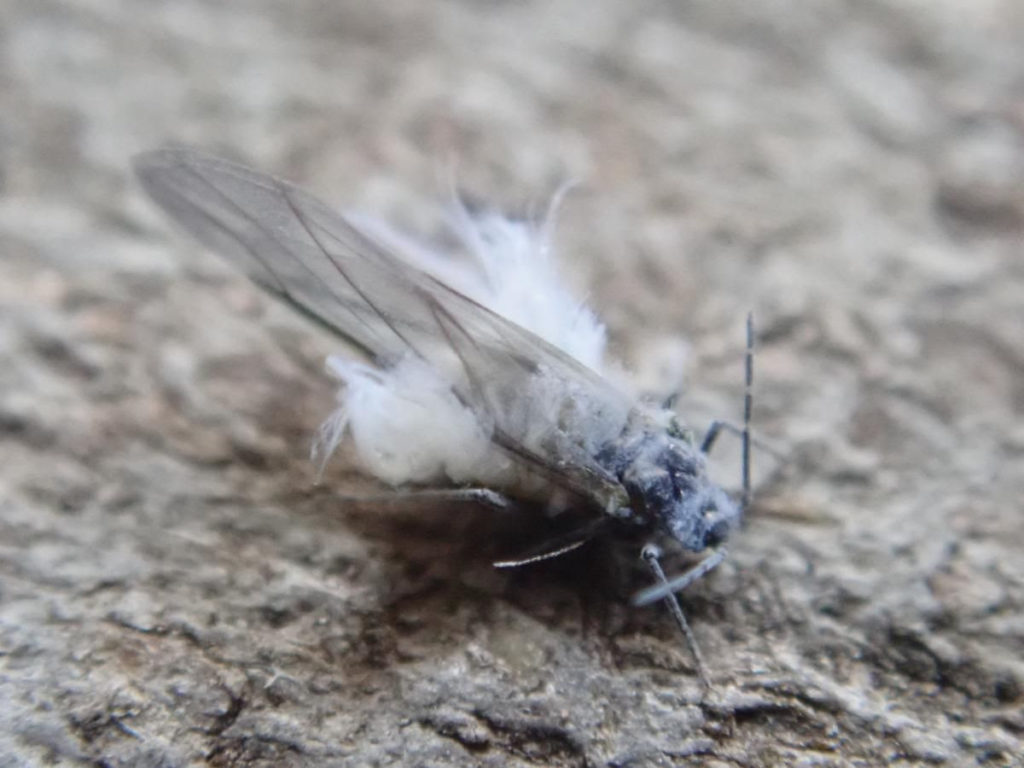As our days shorten, so too do our What’s Buzzin’ dispatches. But the bugs make the most of our short autumn, just like us humans, and they will continue to prepare themselves for winter as long as the days are semi-warm and the nights aren’t freezing. Get your submissions in while you still can! We only have a few weeks left (at best) before What’s Buzzin’ goes dormant for the winter, too.
Header Photo: Wooly Aphid Swarm (Subfamily Eriosomatinae) Brenna Shea, October 5th, 2023. Missoula, MT.
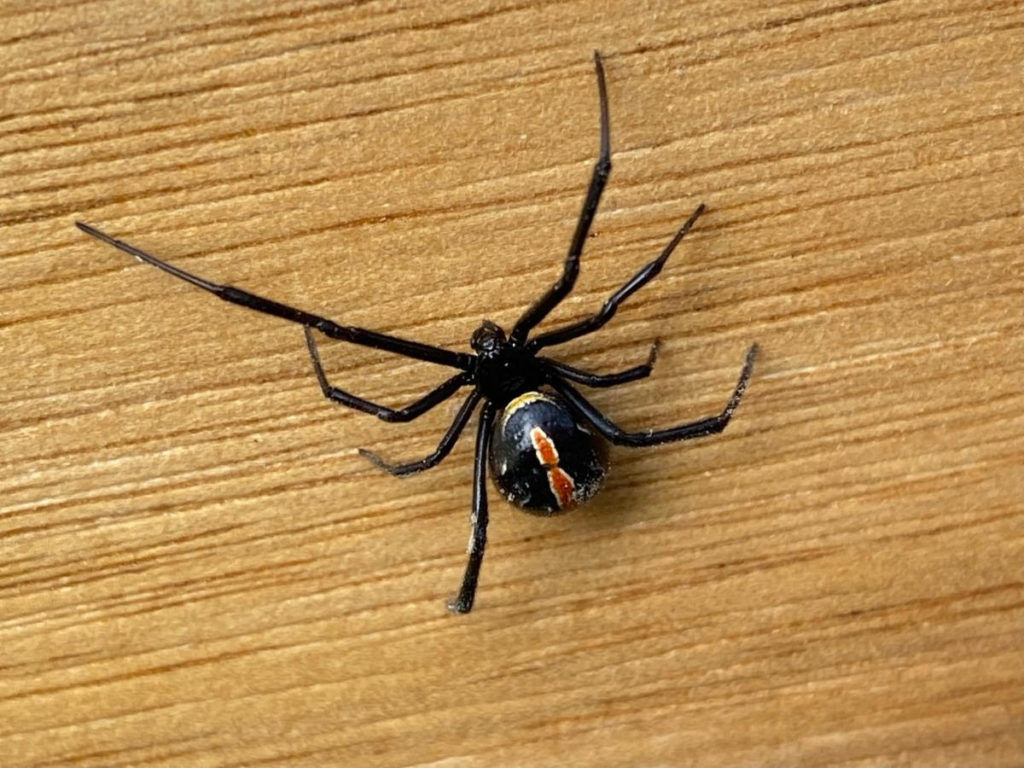
Western Black Widow
Latrodectus hesperus
This individual still exhibits markings that give her away as a juvenile, but that’s no reason to consider her less venomous. As one of the most notorious spiders in North America, black widows deliver potent venom to their prey in order to immobilize them; but rarely bite humans out of defense or aggression. They are reclusive tangle-web spiders that spend most of their lives in their chaotic webs, which they build in low-traffic, out-of-the-way places, usually far from prying human eyes.
Roy Curet, September 28th, 2023. Upper Miller Creek, Missoula, MT.
Modest Sphinx
Pachysphinx modesta
This chunky caterpillar is a modest sphinx, a moth we featured in another What’s Buzzin’ dispatch earlier this summer. The caterpillar will continue to feed until he is large enough pupate (and judging by his current size, he may be close). When he’s ready, he will construct a shallow burrow in the ground and spend the winter in his pupal form, then emerge as an adult in mid- to late spring. This species is found throughout most of North America, though it is absent from the Southwest.
Ryn Boyle, September 9th, 2023. Drummond, MT.


Flat-headed Poplar Borer
Dicerca tenebrica
The flatheaded poplar beetle belongs to the family Buprestidae, or “jewel beetles.” Many species in this family exhibit striking metallic colors, but some, like the emerald ash borer are notorious forest pests. As its name suggests, D. tenebrica feeds on poplars, but has been known to feed on pines in northern regions. Adults can be seen flying from April to November.
Kenny Scruggs, September 29th, 2023. Missoula, MT.
Bristly Millipede
Polyxenus lagurus
These curious critters were found inside a milkweed pod. Though they are millipedes, they only have 17 pairs of legs, much fewer than most of the millipedes we’re accustomed to. Their name comes from the tufts of hairs or setae that cover their body; like tarantula’s urticating hairs, these setae can detach from their body and trip up any predators that may try to make these millipedes into a tasty meal.
Lukas Sokalski. October 3rd, 2023. Maclay Flats, Missoula, MT.
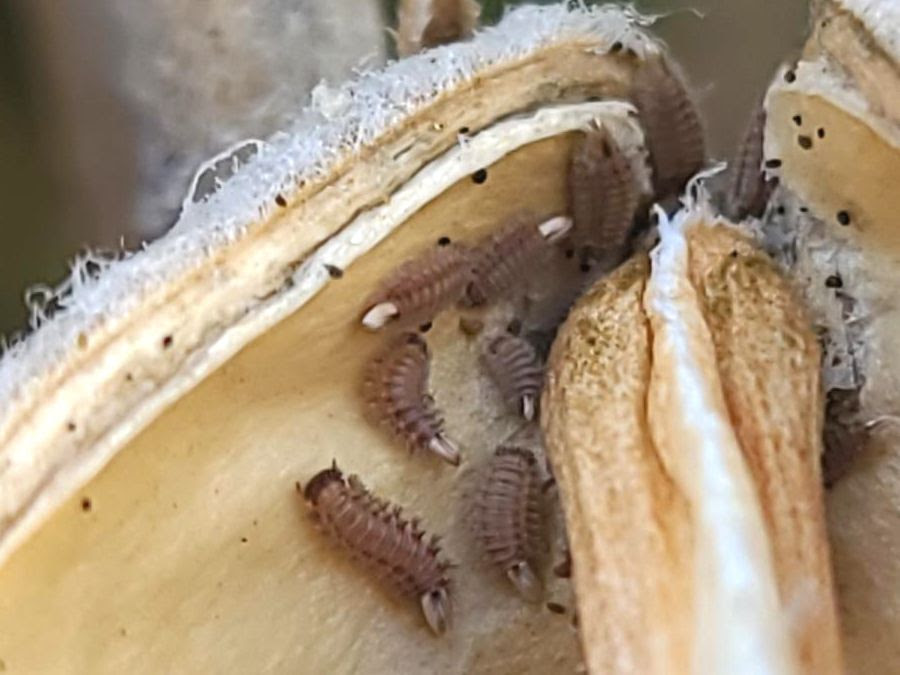
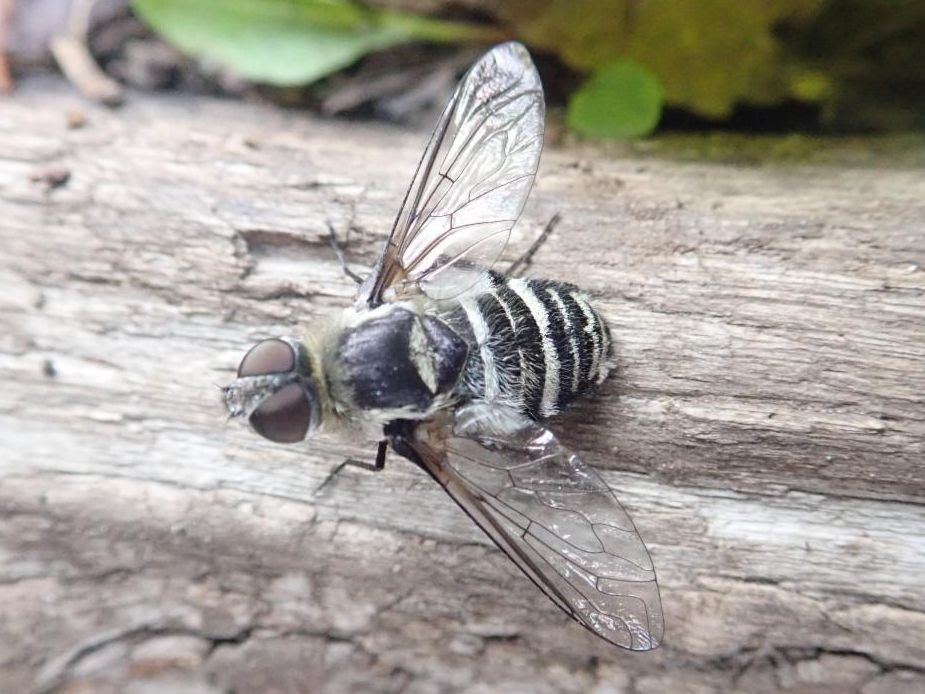
Bee Fly
Subfamily Anthracinae
This chilly bee fly was wandering along the trail at Greenough park; a little too cold to take flight but perfectly happy using its tongue to seek out any water or nutrients on the ground. As a bee mimic, this fly exhibits a fuzzy, striped pattern but has only a single pair of wings (and no stinger). Bee flies are overlooked as pollinators, but are equally important as part of a healthy ecosystem.
Brenna Shea, September 28th, 2023. Greenough Park, Missoula, MT.
Jumping Spider
Subfamily Salticinae
Is there anything more heartwarming than locking eyes with a jumping spider? These adorable “gateway spiders,” as we refer to them around the office, have massive eyes and excellent vision, relying on their eyesight to capture prey (as opposed to webs/touch, like most spiders). They do not construct webs, although they will deploy a silk dragline when exploring, so they always know their way around.
Morgan McNeill, October 5th, 2023. Lolo, MT.
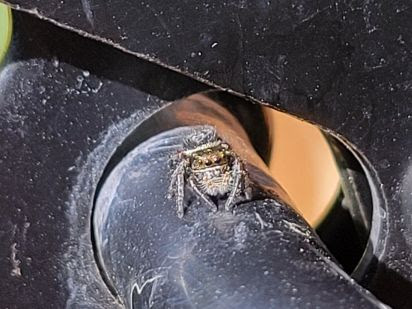
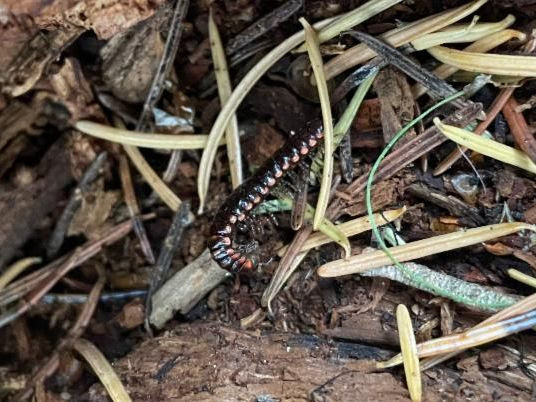
Cherry Millipede
Family Xystodesmidae
The bright colors on this millipede are an apparent warning for predators: I do not taste good. Flat-backed millipedes, so named for their flattened appearance (compared to the rounder shape of their relatives), secrete a defensive toxin that smells strongly of almond: cyanide. Despite this, they are harmless to humans – so long as you wash your hands after handling them and, most importantly, do NOT eat them.
Carolyn Taber, October 2nd, 2023. Pattee Canyon, Missoula, MT.
Woolly Aphid
Subfamily Eriosomatinae
The fuzzy blue butts, as they are affectionately called throughout our offices, are out in full force. These aphids produce a waxy filament that gives them their characteristic “fuzzy” look; as adults, they take flight in the fall in search of mates. The females lay their eggs, which will overwinter, while the adults die off as frosts set in. During their short time on the wing, the adults take on an almost fairy-like appearance; although to some, they are mostly an annoyance that tends to fly right into an open mouth.
Brenna Shea, October 5th, 2023. Missoula, MT.
